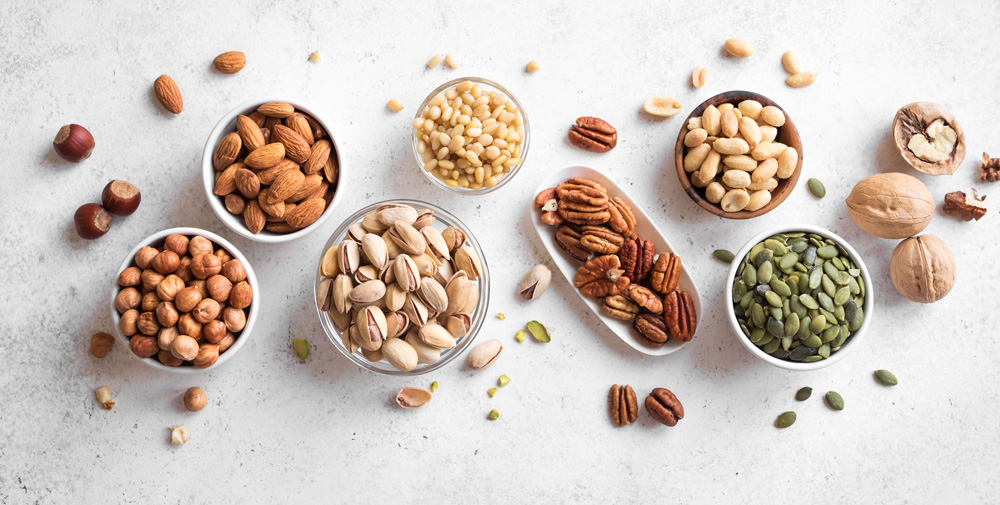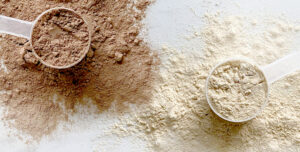What’s the first thing that comes to mind when you think of zinc? If it’s the image of lifeguards wearing the white sunscreen on their noses, then it’s time that you got reintroduced to the chemical element.
We all know that minerals are important for our bodies to stay healthy. But did you know that there are two kinds of minerals? There are macrominerals and trace minerals.
You need larger amounts of macrominerals, such as calcium, phosphorus, magnesium, sodium, and potassium, and only small amounts of trace minerals, such as iron, manganese, copper, iodine, and zinc.
Of the trace elements, zinc is second only to iron in its concentration in your body. The human body contains two to three grams of zinc, and nearly 90% is found in muscle and bone. Other organs containing zinc, include the gastrointestinal tract, prostate, liver, kidney, skin, lung, brain, heart, and pancreas.
Since your body has no specialized zinc storage system, zinc intake is required to maintain a steady state.
How Much Zinc Does Your Body Actually Need Each Day?
The Recommended Dietary Allowances (RDAs) for zinc based on age are:
- 7-12 Months: 3 mg
- 1-3 Years: 3 mg
- 4-8 Years: 5 mg
- 9-13 Years: 8 mg
- 14-18 Years: 11 mg (male) / 9 mg (female)
- 19+ Years: 11 mg (male) / 8 mg (female)
Your body absorbs between 20% to 40% of the zinc present in food. And zinc is best absorbed when taken with a meal that contains protein.
Most people in the United States are able to consume enough zinc through a varied diet or through zinc supplementation. However, the overall frequency of zinc deficiency worldwide is expected to be higher than 20%.
Zinc from animal foods, such as red meat, fish, and poultry, tend to be more readily absorbed by your body than zinc from plant foods. So, here are some examples of zinc-rich food sources.
Foods High In Zinc
Oysters
Oysters contain more zinc per serving than any other food, offering 74 milligrams per serving, which is 673% percent daily value (DV) for zinc. In addition to zinc, raw oysters are also an abundant source of several vitamins and minerals.
Oysters are a good source of vitamin B12 and they’re also a good source of some other micronutrients, including: vitamin D, iron, magnesium, phosphorus, copper, manganese, and selenium.
Meat And Poultry
Even though oysters contain more zinc per serving than many other foods, red meat and poultry provide the majority of zinc in the American diet.
Red meat is loaded with vitamins, minerals, and other nutrients that can have a profound effect on health. A 3.5-ounce (100 gram portion) of raw ground beef (10%) fat contains 32% of the RDA for zinc, and comes with 20 grams of quality animal protein, 10 grams of fat, and 176 calories. Red meat is also a good source of vitamin B3 (niacin), vitamin B12 (cobalamin), vitamin B6 (pyridoxine), selenium, and iron.
Chicken is also a great source of many key nutrients, including protein, niacin, selenium, and phosphorus. A 3-ounce (85-gram) serving of chicken breast contains 122 calories, 24 grams of protein, and 3 grams of fat. It also contains 51% of the DV for niacin, 36% of the DV for selenium, 17% of the DV for phosphorus, 16% of the DV for vitamin B6, 10% of the DV for B12, 9% of the DV for riboflavin, and 7% of the DV for zinc.
Dark Chocolate
A 100-gram (3.5 ounce) bar of 70% to 85% dark chocolate contains 3.3 milligrams of zinc, or 30% of the DV for zinc. That said, 100 grams of dark chocolate contains 600 calories, making it a high-calorie food. So, while dark chocolate may be a good source of zinc, it should be eaten in moderation and not be your primary source of zinc.
Milk And Dairy Foods
Even though they’re better known for being rich sources of calcium, milk and yogurt are also good sources of zinc. One cup of nonfat milk contains 1.1 milligrams of zinc, and one cup of nonfat yogurt contains 2.38 milligrams of zinc.
You can also add nonfat milk to fortified breakfast cereals, which can provide a quarter of your zinc needs. Just keep in mind that the majority of cereals aren’t considered healthy since they pack roughly two teaspoons of sugar per serving.
Zinc Sources For Vegans And Vegetarians
If you don’t eat meat, poultry, and shellfish, or are dairy-free, don’t worry. There are other ways to source zinc that steer clear of animal products. However, it’s important to note that vegetarians sometimes require as much as 50% more of the RDA for zinc than non-vegetarians.
Legumes
Legumes are a great low-fat, high-protein food packed with vitamins, minerals, and lots of dietary fiber. Since legumes like chickpeas, lentils, and beans provide zinc, you can add foods, such as hummus, edamame, and black beans to your meals for extra zinc .
One cup of lentils contains 2.52 milligrams of zinc, making it an excellent source of zinc. Some other good sources of zinc are cooked edamame (2.13 mg per cup), black beans (1.93 mg per cup), and canned chickpeas (1.66 mg per cup).
However, legumes also contain phytates, which are antinutrients that inhibit the absorption of zinc and other minerals. So, this means that zinc from legumes won’t be as well absorbed as the zinc from animal products.
Whole Grains
Whole grains such as wheat, quinoa, rice, and oats contain some zinc, but, like legumes, they also contain phytates, which bind to zinc and reduce its absorption. That said, whole grains are still a good source of many important nutrients, such as: fiber, B vitamins, magnesium, iron, phosphorus, manganese, and selenium.
Nuts
Nuts like cashews, almonds, and peanuts can also boost your intake of zinc. A 1-ounce (28-gram) serving of cashews contains 15% of the DV for zinc. Plus, nuts also contain other healthy nutrients, including fiber, as well as a number of vitamins and minerals.
*The links used in this article are being provided as a convenience and for informational purposes only; they do not constitute an endorsement or an approval by Iovate Health Sciences International Inc. or any of its affiliates (“Iovate”) of any of the products, services or opinions of the corporation or organization or individual. Iovate bears no responsibility for the accuracy, legality or content of the external site or for that of subsequent links. Contact the external site for answers to questions regarding its content.







